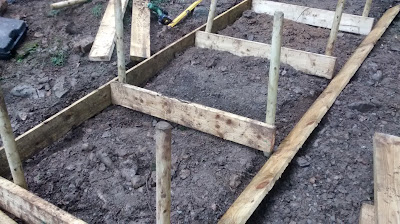"Don't it always seem to go that you don't know what you've got 'til it's gone..." Joni Mitchell, 1970.
Wildflower meadows are in catastrophic decline. It is estimated that 97% were lost, nationally, between the 1930s and 1980s with a corresponding loss of insects and predators that are dependent on them. When, for instance, did you last see a hedgehog!?
With its wildflower rich grassland, open grown mature trees and wetland, the National Trust parkland at St.Catherine's, near Windermere, is a rare glimpse of a habitat that was once much more widespread.
Bumblebee on betony at St. Catherine's.
Many acres of perennial rye grass have taken the place of wildflower meadows. This has had a devastating impact on pollinators and especially bumblebee numbers. Two bumblebee species have become extinct recently.
Bumblebee covered in pollen on cats-ear at St.Catherine's.
Wildflowers offer a sustained source of nectar and pollen during the long Summers.
Tormentil.
"Bumblebees are key factors in our wildlife. If they disappear many of our plants will not bear fruit." David Attenborough.
The presence of quaking grass is a good indicator of well managed "unimproved" grassland at St.Catherine's.
Harebells, betony and burnet saxifrage.
Black knapweed, birds foot trefoil and thistles.
Young goldfinches eat knapweed seeds. Other small birds predate on invertebrates attracted to the flowers.
Meadow brown.
Even stinging nettles have a place in hay meadows. Peacock butterflies lay their eggs on nettles; these plants are a food source for the caterpillars.
Damselfly.
All of the above images were taken one afternoon in July at St. Catherine's with the exception of the damselfly and peacock butterfly.
*******************
The benefits and importance of well managed hay meadows to wildlife has become more widely recognised.
The Cumbria Wildlife Trust has been working with landowners to restore and manage hay meadows through Meadow Life, a project funded by the Heritage Lottery Fund.
In September, Claire Cornish, Meadow Life Restoration Officer, Cumbria Wildlife Trust, met up with National Trust countryside rangers, volunteers and the tenant farmer of Town Head Farm in Grasmere.
The meadow below Allan Bank had been chosen to be planted up with 2000 wildflower plug plants. These plug plants are young plants raised in individual cells or small pots.
A spade depth of turf is dug out, then inverted...
...and a space is made in the centre...
...for the plug plant, in this instance a wood cranesbill.
This, a close relative, is meadow cranesbill at St. Catherine's in July.
Eleven different species of wildflowers were planted with the aim to increase plant diversity in this meadow.
Will Benson, National Trust tenant farmer. took time out from his busy schedule to help with the planting.
Claire explained what was going on to interested walkers on the nearby footpath.
Plug planting is just one of many initiatives of Meadow Life.
Below is a quote from Cumbria Wildlife Trust website:
Welcome to Meadow Life!
"What is Meadow Life Doing?"
"We hope to help reverse the decline of this very special habitat and bring back the stunningly evocative landscape of hay meadows to Cumbria".
For more information, click on the link below.
Plug planting is just one of many initiatives of Meadow Life.
Below is a quote from Cumbria Wildlife Trust website:
Welcome to Meadow Life!
"What is Meadow Life Doing?"
"We hope to help reverse the decline of this very special habitat and bring back the stunningly evocative landscape of hay meadows to Cumbria".
For more information, click on the link below.










